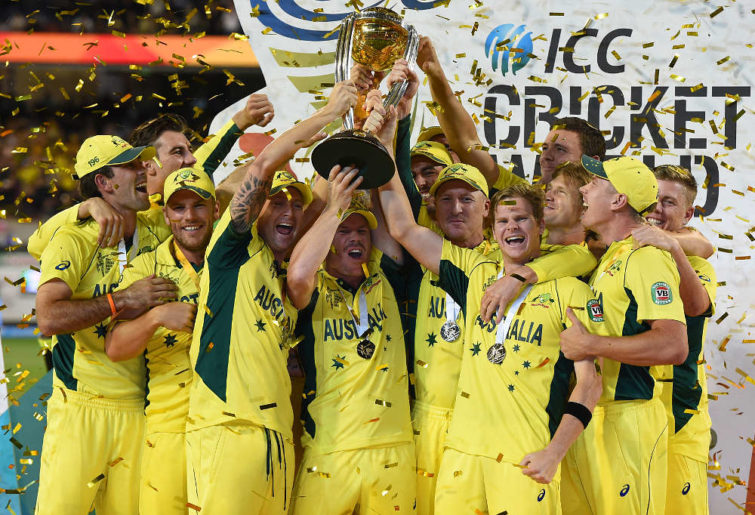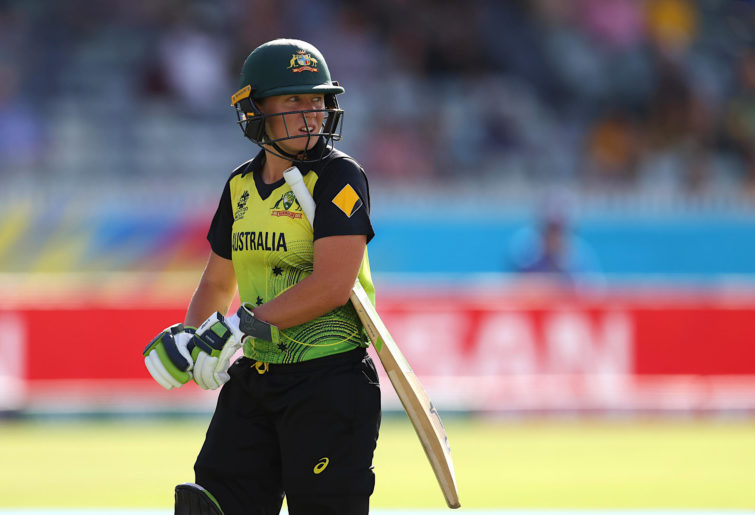Ruthless Aussies thrash Bangladesh by eight wickets, secure ODI series clean sweep
A ruthless Australian women's cricket team has shown little mercy to Bangladesh, thumping the hosts by eight wickets to clean sweep their ODI series.…
Opinion
One of the most remarkable things about cricket is that it happens at all.
It is a parochial game borne out of a murky past in the south of England that shares its pedigree with the unspeakable stoolball. It is expensive to stage, inscrutable to the outsider and exhausting in span the game. By rights, it should be a niche affair. But there is nothing niche about modern cricket, as Sunday evening reminded us.
The next remarkable thing about cricket is that when it does happen, as it does a lot these days, it can seem to follow a pre-determined script. That the barely controlled or coordinated madness of 22 players should unfold itself in familiar patterns ought to be improbable, and yet there are famous examples.
Allan Border and Richie Benaud’s Australians, both down on their luck, both contrived to tie matches against unexpectedly tough opponents on the final over of the final day of a match, to date the only two times this happened in the game’s lengthy history.
The Australians won the Centenary Test of 1977 by an identical margin of the very match being commemorated.
And now Australia’s World Cup final on their home ground felt eerily familiar to the last one, five years ago.
Five years ago in the men’s ODI World Cup, New Zealand were earmarked as the team to beat, and Australia failed to do so when they first met at Eden Park, being expertly shot out by Trent Boult for 151. New Zealand didn’t lose a match and marched to the final imperiously where a great contest awaited, but then the unthinkable happened.
On just the fifth ball of the match, Brendon McCullum had his stumps atomised by Mitchell Starc, who spent the afternoon laughing at the laws of physics and mere mortals. From that ball, the Kiwi belief faded and the match seemed to be lost. It was.

(Photo: AAP)
Here India’s bona fides were well and truly established in the tri-series warm-up, and in the World Cup proper they humiliated Australia in the first match before marching imperiously to the final unbeaten with a great contest awaiting. This time Australia were batting first, but again the unthinkable happened.
On just the fifth ball of the match, Alyssa Healy chipped up a regulation snare off Deepti Sharma’s bowling to Shafali Verma at cover. It was fumbled and went to ground. It wasn’t quite Starc’s thunderbolt in terms of instantaneous shock, but the fast bowler’s wife soon made it clear how seismic this was for the game.
It could not now be a chanceless innings, but it could and would be everything else that both Australian and women’s cricket could ask for. There were five sixes, three of which were clubbed back to back from Shikha Pandey’s bowling, and for all the delimiters between men’s and women’s sport, some had been smashed so crisply by Healy that they would have been maximums in any ground in the world.
Quaint as it may now seem, there was a time when Alyssa Healy was Ian Healy’s niece. In the previous World Cup the world noticed that she was the female David Warner. Now after a player-of-the-match performance, a blistering 75 from 39, in front of 86,000 in a World Cup final, she doesn’t need a male player for a frame of reference.
She is Alyssa Healy, a fact that speaks for itself.

(Photo by Ryan Pierse/Getty Images)
As if events need a cosmic balance, a yin to the yang as necessary as a Chris Rogers to a David Warner, Beth Mooney played an innings that was complementary to perfection. India were focused on the inner ring as an avenue to cut off boundaries, so Mooney took full advantage by playing balls practically into her own toes – faultless dropping and dashing that was so clinical and responsible it was instantly forgettable.
She rotated the strike and waited for the bad ball – with the carnage at the other end and nerves on edge there were always going to be enough. Mooney didn’t hit a single six, but played so easy it left the impression that she simply didn’t deem it necessary. The tortoise beat the hare, top scoring over Healy by three runs for 78 from 56, itself a reminder of where the game is that such a knock could now be considered a shade on the sluggish side.
If India had been offered a World Cup final against an Australia with no Ellyse Perry and no Tayla Vlaeminck where Meg Lanning, Ashleigh Gardner and Rachael Haynes would between them score 22 runs, they would have grabbed the chance in a heartbeat. On the night, there was nothing to grab to.
Australia’s total was 184. Considering the start, it had been conceivable that it could crest into a horrific 200-plus tsunami, but this was undeniably a massive total on a massive occasion and it is likely India took little solace from the damage control that netted them four wickets from their spinners after a 115-run opening partnership.
Australia is a team with enough depth to drown in. Megan Schutt received little fanfare in the tournament and the lead-up, not uncommon for talented players against a pecking order that sometimes seems to prioritise the ability to sell Weet-Bix, but she was ranked the number one bowler in the world before the tournament, and it wasn’t an accident.
She made the first in-road quickly, before even the fifth ball, and to rub salt in the wound it was a brilliant catch at cover. In the end India lost all ten wickets and all ten were caught, many of them brilliant efforts from Nicola Carey and Beth Mooney, who was the only player to drop a single chance, which, if taken, may have been the catch of the tournament. India’s coaching team is likely to take one note from the innings and underline it three times: fielding drills.
To many sports supporters, it may seem strange to laud a final and say that it had everything except an actual contest, but cricket is a game that is just as often about narratives as anything else, and those narratives are what we remember.

(Photo by Daniel Pockett-ICC/ICC via Getty Images)
This World Cup was like the classic hero’s journey. The entire final was set up as an event for Australia to win, but from the beginning there were questions over whether the team could actually make it. There were injury clouds, questions over key players’ form, and when the cricket itself started, things seemed to go from bad to worse.
Australia lost to India, beat Sri Lanka at the last gasp, vented their frustrations on Bangladesh before squeaking past New Zealand by the margin of a boundary. In the semi that nearly never was, their best bowler nearly handed South Africa the game with some serious wet-ball yips in the final over, this time home by six runs. Sidelined star Ellyse Perry looked liable to chew her fingernails clean off as she watched the last overs, and many viewers could relate.
To recap, Australia had played five games, lost one, and only enjoyed one comfortable win. It looked like the performance of a lucky side rather than a champion side. This, when everyone was watching.
This had become the tournament that counted, and they were suddenly looking like pretenders to the throne after decades of graft and barnstorming performances. The public wanted a re-run, a triumph that left no doubt, a ghost of Christmases past and Australia delivered.
They followed the script. And it was a good script. It was as good as the last time.